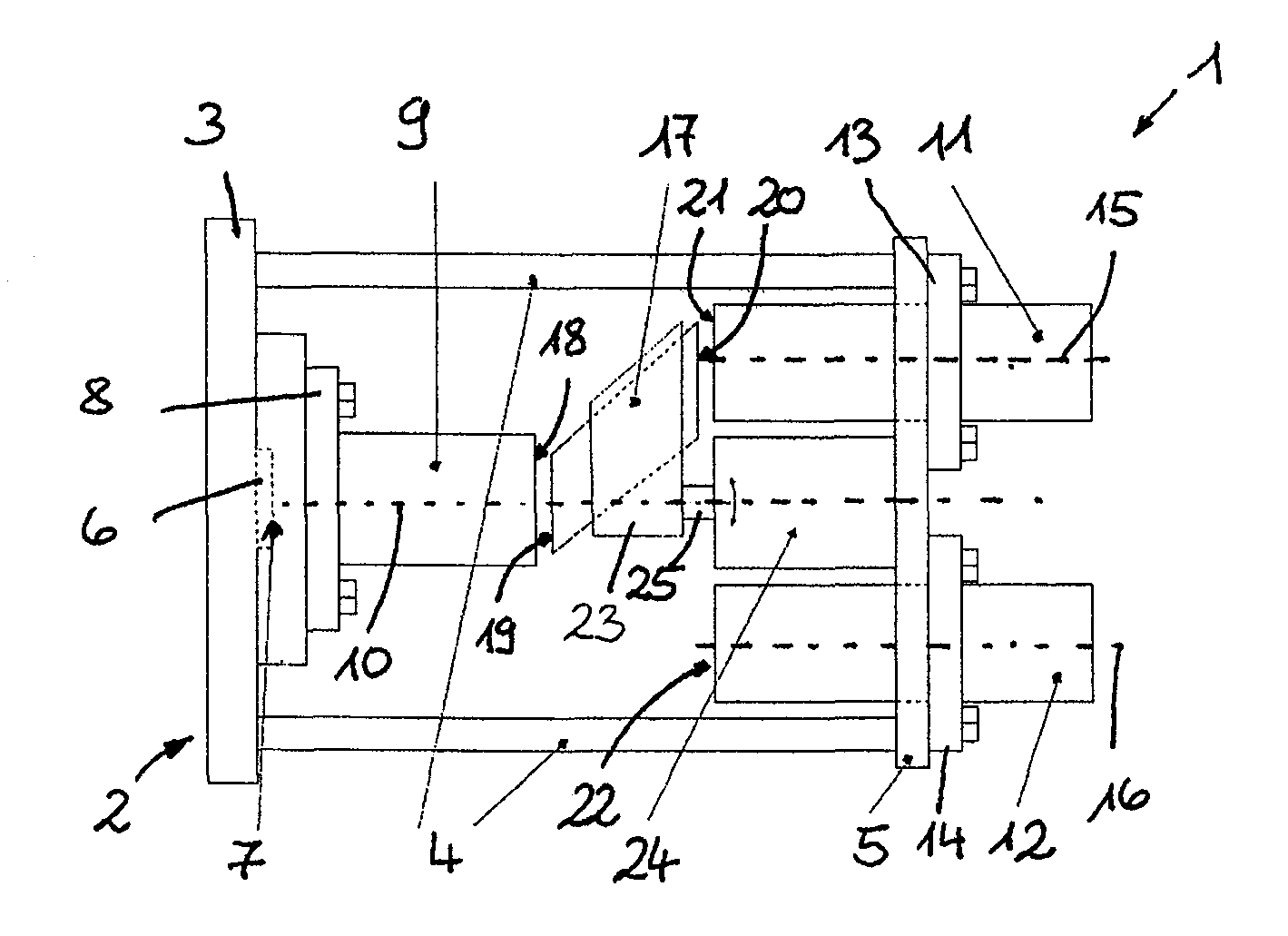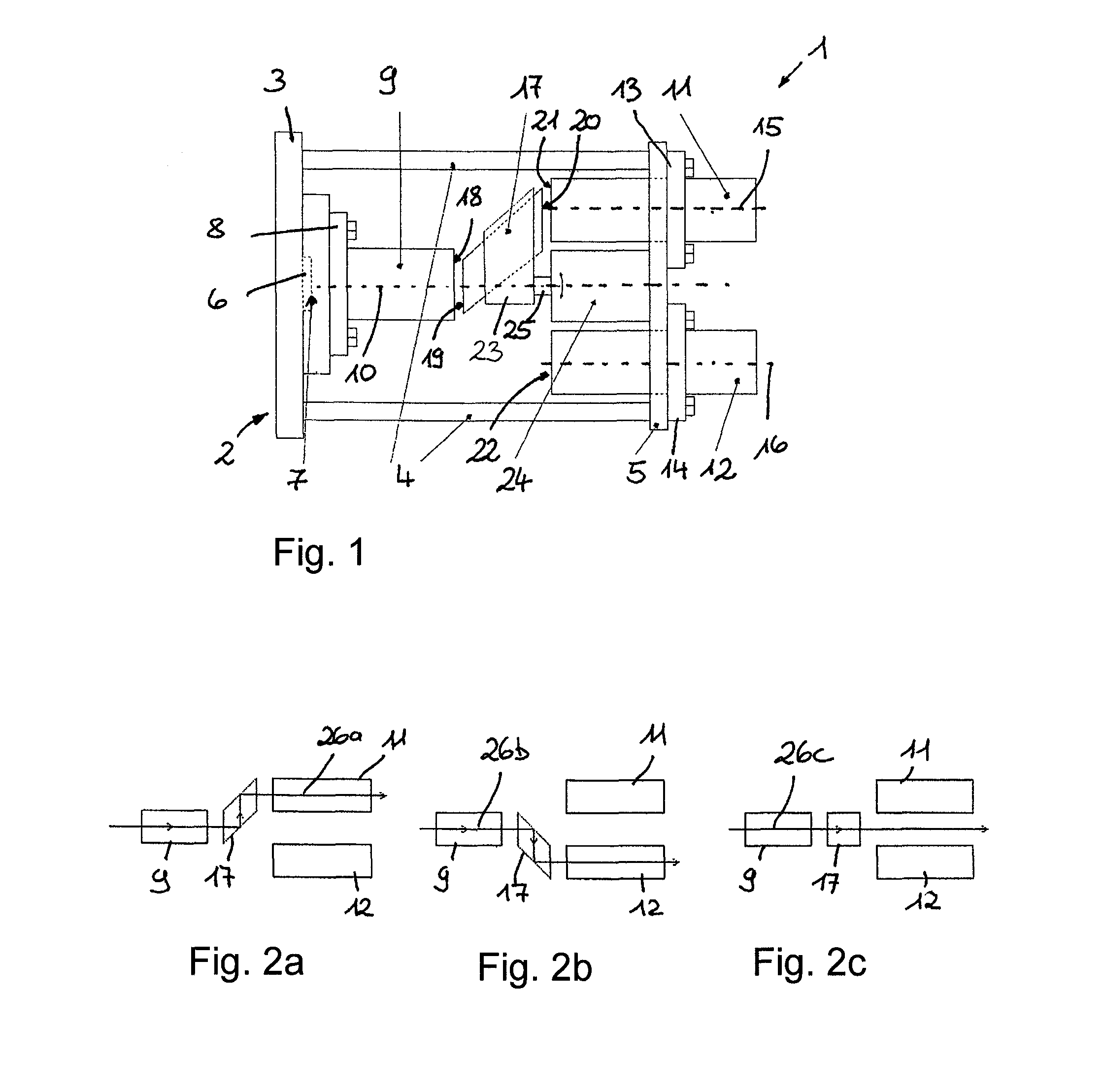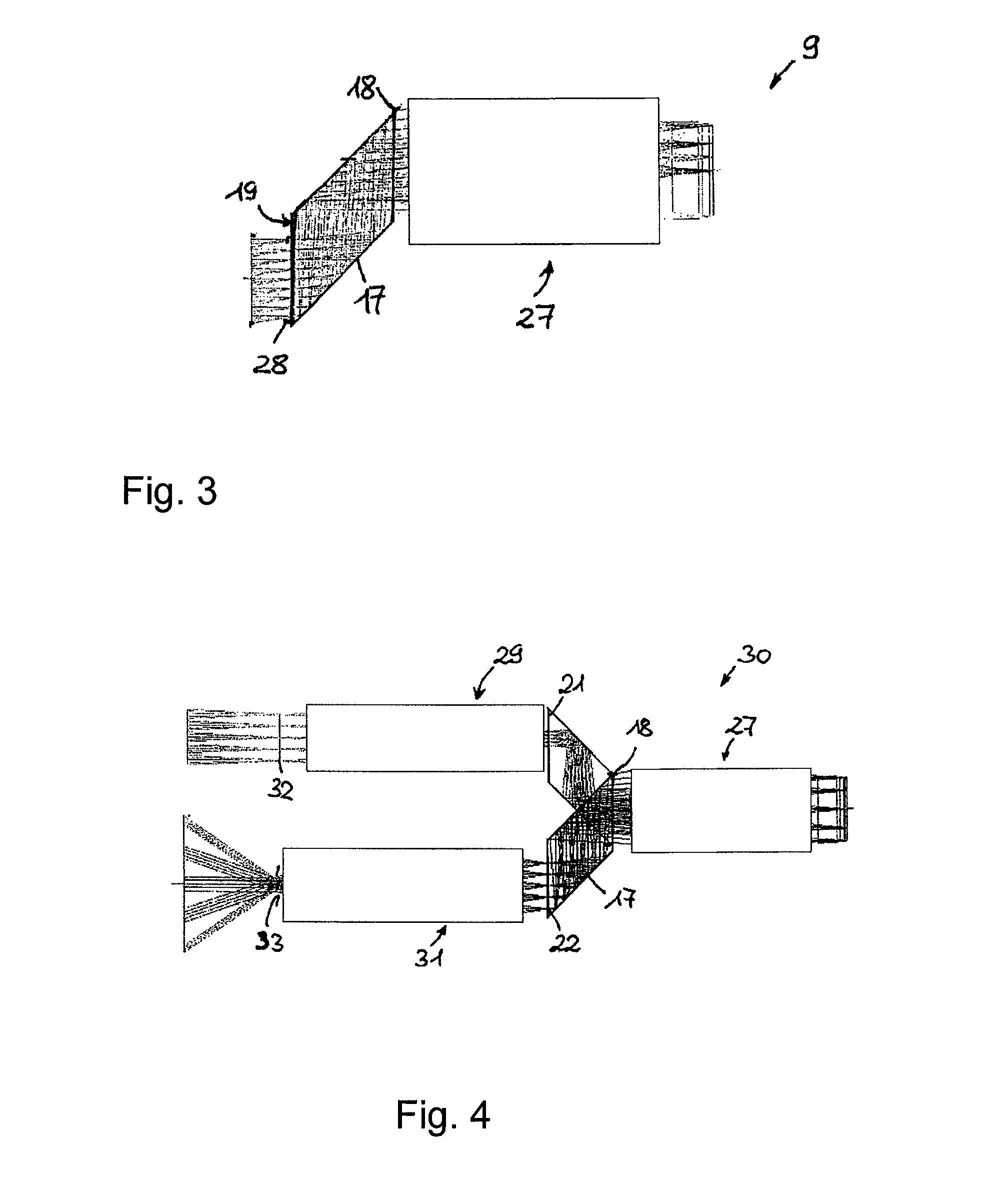Camera with pivotable prism
a technology of pivoting prisms and cameras, applied in the field of cameras with pivoting prisms, can solve the problems of complex adjustment mechanism provision, high cost, and low specific weight, and achieve the effect of automatically changing the focal length
- Summary
- Abstract
- Description
- Claims
- Application Information
AI Technical Summary
Benefits of technology
Problems solved by technology
Method used
Image
Examples
Embodiment Construction
[0022]FIG. 1 schematically shows camera 1, which in the present case is a single-lens camera, having housing 2 which is formed from base plate 3, frame 4, and lens plate 5. CCD chip 6 having sensitive exposure surface 7, and which converts the optical signals striking exposure surface 7 and information into electrical signals, is fastened to base plate 3. A subsequent signal processing unit having an image memory, computation programs, and the like is not illustrated.
[0023]Base lens 9 is mounted over sensitive exposure surface 7 on base plate 3, calibrated with the aid of lens holder 8, optical axis 10 of the base lens being perpendicularly centered on exposure surface 7. Supplementary lenses 11, 12 are accommodated in lens plate 5, at a fixed distance from base lens 9, in each case parallel to optical axis 10 via an optical axis 15, 16, respectively, and situated equidistantly about optical axis 10 via lens holders 13, 14 at a calibrated distance from base lens 9.
[0024]With referen...
PUM
 Login to View More
Login to View More Abstract
Description
Claims
Application Information
 Login to View More
Login to View More - R&D
- Intellectual Property
- Life Sciences
- Materials
- Tech Scout
- Unparalleled Data Quality
- Higher Quality Content
- 60% Fewer Hallucinations
Browse by: Latest US Patents, China's latest patents, Technical Efficacy Thesaurus, Application Domain, Technology Topic, Popular Technical Reports.
© 2025 PatSnap. All rights reserved.Legal|Privacy policy|Modern Slavery Act Transparency Statement|Sitemap|About US| Contact US: help@patsnap.com



